Zhennan Wu
DrugPilot: LLM-based Parameterized Reasoning Agent for Drug Discovery
May 20, 2025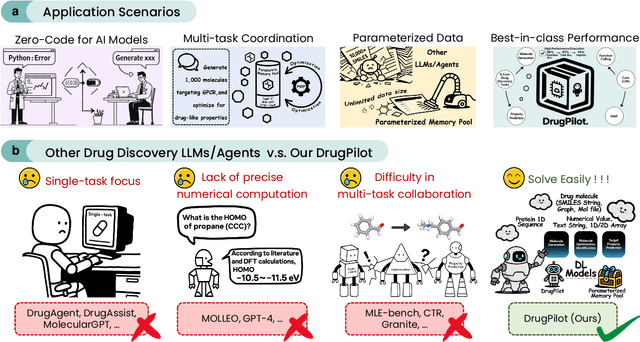
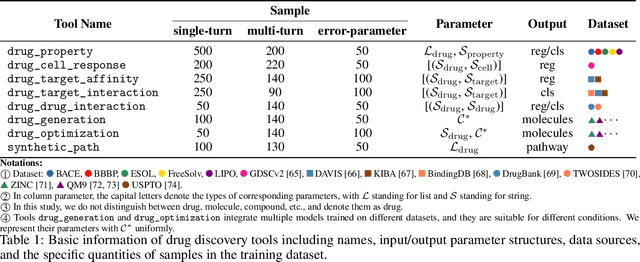
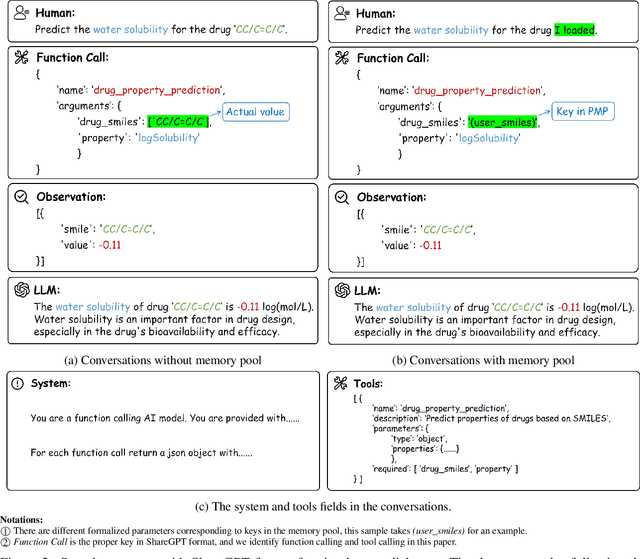
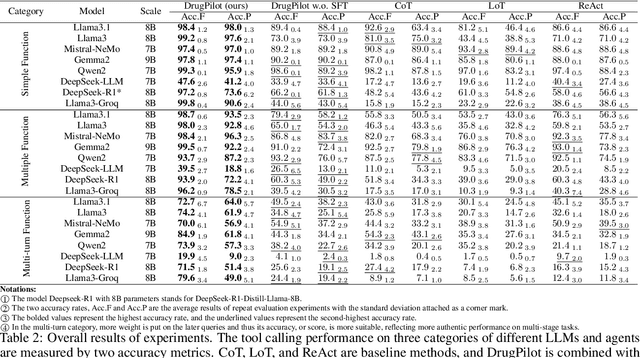
Abstract:In the field of AI4Science, large-scale language models (LLMs) show great potential to parse complex scientific semantics, integrate cross-disciplinary knowledge, and assist critical task research. However, in the field of drug discovery, despite the optimization through professional data pre-training, context window expansion, and internet search, the existing LLMs are still facing challenges such as massive multi-modal and heterogeneous data processing, domain knowledge dynamic updating delay, and insufficient confidence in predicting the results of complex computational tasks. To address these challenges, we propose the DrugPilot, an LLM-based agent with parameterized reasoning for drug discovery. DrugPilot addresses key limitations of traditional end-to-end LLM prediction approaches through its parametric inference architecture. This agent system supports major phases of the drug discovery pipeline, facilitating automated planning and execution of multi-stage research tasks. To address the critical challenge of multi-modal drug data analysis (incorporating both public datasets and user-submitted data), we developed an interactive parameterized memory pool. This innovative component standardizes real-world drug data into parametric representations, simultaneously enabling efficient knowledge retrieval in multi-turn dialogue while mitigating the information loss inherent in text-based data transmission. Additionally, we created a drug instruct dataset across 8 essential drug discovery tasks for model fine-tuning and evaluation. Based on the Berkeley function calling evaluation framework, DrugPilot demonstrated the most advanced tool calling capabilities on our drug discovery tool instruction dataset, outperforming existing agents (e.g., ReAct, LoT). Specifically, it achieves task completion rates of 98.0%, 93.5%, and 64.0% on simple, multiple, and multi-turn tasks, respectively.
NeuSDFusion: A Spatial-Aware Generative Model for 3D Shape Completion, Reconstruction, and Generation
Mar 27, 2024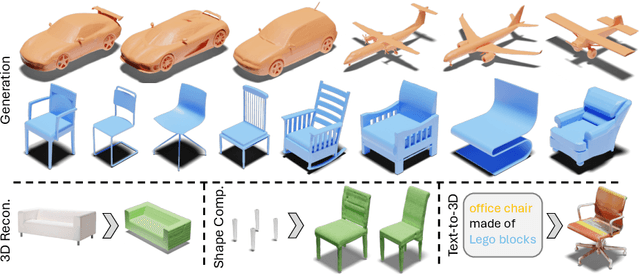
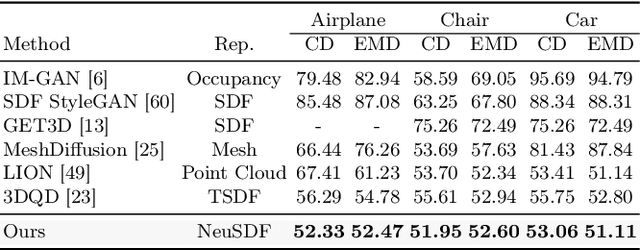

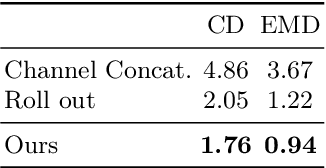
Abstract:3D shape generation aims to produce innovative 3D content adhering to specific conditions and constraints. Existing methods often decompose 3D shapes into a sequence of localized components, treating each element in isolation without considering spatial consistency. As a result, these approaches exhibit limited versatility in 3D data representation and shape generation, hindering their ability to generate highly diverse 3D shapes that comply with the specified constraints. In this paper, we introduce a novel spatial-aware 3D shape generation framework that leverages 2D plane representations for enhanced 3D shape modeling. To ensure spatial coherence and reduce memory usage, we incorporate a hybrid shape representation technique that directly learns a continuous signed distance field representation of the 3D shape using orthogonal 2D planes. Additionally, we meticulously enforce spatial correspondences across distinct planes using a transformer-based autoencoder structure, promoting the preservation of spatial relationships in the generated 3D shapes. This yields an algorithm that consistently outperforms state-of-the-art 3D shape generation methods on various tasks, including unconditional shape generation, multi-modal shape completion, single-view reconstruction, and text-to-shape synthesis.
Frankenstein: Generating Semantic-Compositional 3D Scenes in One Tri-Plane
Mar 24, 2024



Abstract:We present Frankenstein, a diffusion-based framework that can generate semantic-compositional 3D scenes in a single pass. Unlike existing methods that output a single, unified 3D shape, Frankenstein simultaneously generates multiple separated shapes, each corresponding to a semantically meaningful part. The 3D scene information is encoded in one single tri-plane tensor, from which multiple Singed Distance Function (SDF) fields can be decoded to represent the compositional shapes. During training, an auto-encoder compresses tri-planes into a latent space, and then the denoising diffusion process is employed to approximate the distribution of the compositional scenes. Frankenstein demonstrates promising results in generating room interiors as well as human avatars with automatically separated parts. The generated scenes facilitate many downstream applications, such as part-wise re-texturing, object rearrangement in the room or avatar cloth re-targeting.
BlockFusion: Expandable 3D Scene Generation using Latent Tri-plane Extrapolation
Jan 31, 2024



Abstract:We present BlockFusion, a diffusion-based model that generates 3D scenes as unit blocks and seamlessly incorporates new blocks to extend the scene. BlockFusion is trained using datasets of 3D blocks that are randomly cropped from complete 3D scene meshes. Through per-block fitting, all training blocks are converted into the hybrid neural fields: with a tri-plane containing the geometry features, followed by a Multi-layer Perceptron (MLP) for decoding the signed distance values. A variational auto-encoder is employed to compress the tri-planes into the latent tri-plane space, on which the denoising diffusion process is performed. Diffusion applied to the latent representations allows for high-quality and diverse 3D scene generation. To expand a scene during generation, one needs only to append empty blocks to overlap with the current scene and extrapolate existing latent tri-planes to populate new blocks. The extrapolation is done by conditioning the generation process with the feature samples from the overlapping tri-planes during the denoising iterations. Latent tri-plane extrapolation produces semantically and geometrically meaningful transitions that harmoniously blend with the existing scene. A 2D layout conditioning mechanism is used to control the placement and arrangement of scene elements. Experimental results indicate that BlockFusion is capable of generating diverse, geometrically consistent and unbounded large 3D scenes with unprecedented high-quality shapes in both indoor and outdoor scenarios.
Approximate Inference for Stochastic Planning in Factored Spaces
Mar 23, 2022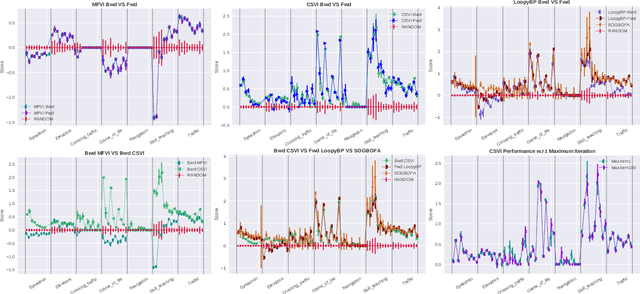

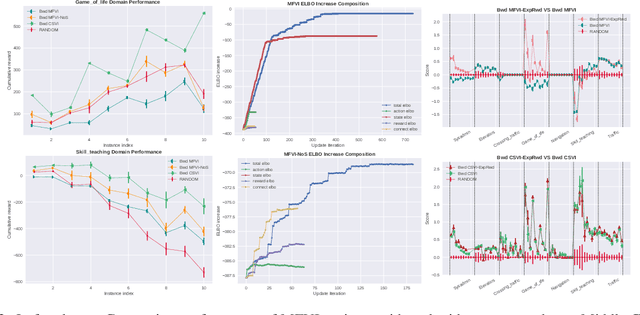
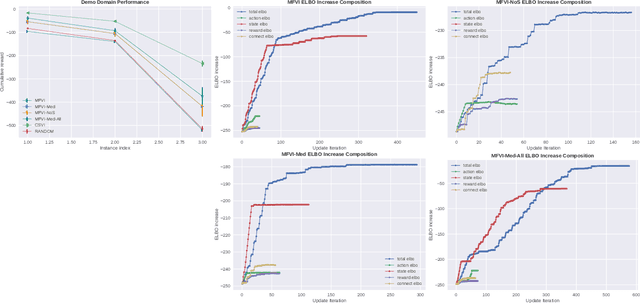
Abstract:The paper explores the use of approximate inference techniques as solution methods for stochastic planning problems with discrete factored spaces. While much prior work exists on this topic, subtle variations hinder a global understanding of different approaches for their differences and potential advantages. Here we abstract a simple framework that captures and connects prior work along two dimensions, direction of information flow, i.e., forward vs backward inference, and the type of approximation used, e.g., Belief Propagation (BP) vs mean field variational inference (MFVI). Through this analysis we also propose a novel algorithm, CSVI, which provides a tighter variational approximation compared to prior work. An extensive experimental evaluation compares algorithms from different branches of the framework, showing that methods based on BP are generally better than methods based on MFVI, that CSVI is competitive with BP algorithms, and that while inference direction does not show a significant effect for VI methods, forward inference provides stronger performance with BP.
Adversarial Attacks on ML Defense Models Competition
Oct 15, 2021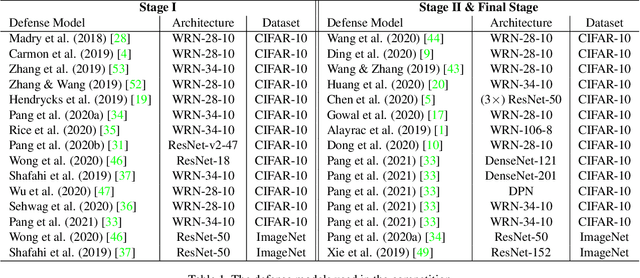
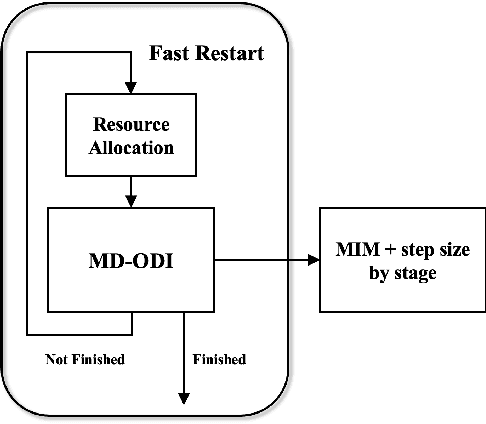
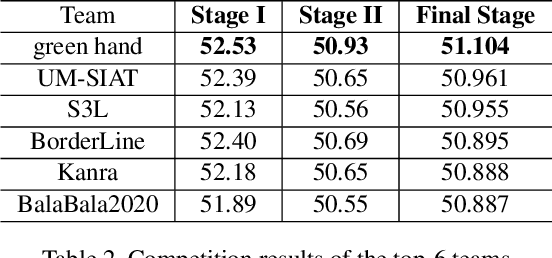
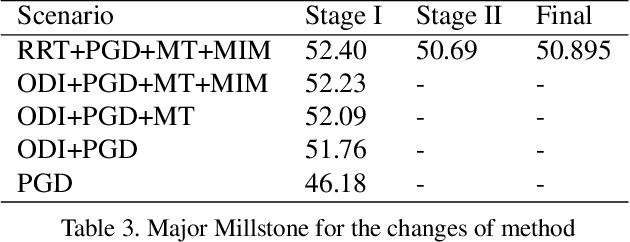
Abstract:Due to the vulnerability of deep neural networks (DNNs) to adversarial examples, a large number of defense techniques have been proposed to alleviate this problem in recent years. However, the progress of building more robust models is usually hampered by the incomplete or incorrect robustness evaluation. To accelerate the research on reliable evaluation of adversarial robustness of the current defense models in image classification, the TSAIL group at Tsinghua University and the Alibaba Security group organized this competition along with a CVPR 2021 workshop on adversarial machine learning (https://aisecure-workshop.github.io/amlcvpr2021/). The purpose of this competition is to motivate novel attack algorithms to evaluate adversarial robustness more effectively and reliably. The participants were encouraged to develop stronger white-box attack algorithms to find the worst-case robustness of different defenses. This competition was conducted on an adversarial robustness evaluation platform -- ARES (https://github.com/thu-ml/ares), and is held on the TianChi platform (https://tianchi.aliyun.com/competition/entrance/531847/introduction) as one of the series of AI Security Challengers Program. After the competition, we summarized the results and established a new adversarial robustness benchmark at https://ml.cs.tsinghua.edu.cn/ares-bench/, which allows users to upload adversarial attack algorithms and defense models for evaluation.
 Add to Chrome
Add to Chrome Add to Firefox
Add to Firefox Add to Edge
Add to Edge